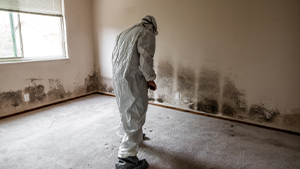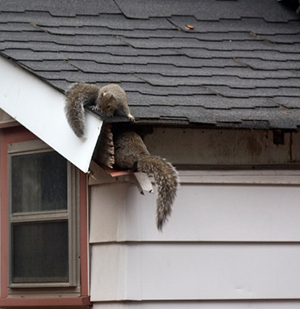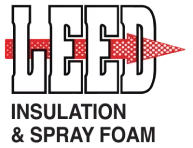2024 was a rough year for many Floridians. Multiple hurricanes, record amounts of rain, and a suffocatingly hot and humid climate made it hard to keep mold and pests out of our homes, especially our attic spaces. Every year we face several hurdles: a possible hurricane damaged roof or minor roof leak causing wet attic insulation, pests looking for a warm place to hide, and our climate’s heat and humidity creating a perfect breeding ground for mold.
When mold and pests do get into your attic insulation, they can affect your health, your home’s structural integrity, and indoor air quality. Because mold spores can trigger allergies and respiratory issues and pest droppings spread harmful bacteria and viruses, it’s imperative to remove your damaged insulation.
The best plan is to call in an expert for help. Proper insulation removal services require specialized equipment, safety measures, and expertise to do the job. The professional path is the safest and most effective approach to remove and replace your contaminated insulation.
Why Contaminated Attic Insulation Must Be Removed
Mold Contamination Issues

Mold can start growing within 24–48 hours on wet materials. It feeds on damp wood or paper backing, creating rapid mold growth in your tight attic spaces, especially if they’re poorly ventilated. Musty odors can make their way into your living space, and mold spores in the air can endanger your family’s health. Left unchecked, mold can eat away at wood framing and sheetrock, compromising your home’s structural integrity.
Pest Infestation Problems

Pest infestations from rats, mice, squirrels, bats, or raccoons can wreck your insulation. Their nesting habits compact and contaminate your insulation while their urine and feces create a breeding ground for harmful pathogens.
Rodent droppings can carry and spread viruses like hantavirus and bacteria that can cause respiratory illnesses, especially when the damaged insulation is disturbed. Beyond insulation, rodents chewing on wiring can pose potential fire risks. Please note that Leed Insulation does not do pest removal.
Necessity of Remove and Replace Approach
Because contaminated insulation causes ongoing issues, including health risks and poor air quality, professional removal and disinfection is the recommended solution. The remove and replace approach is a “wipe the slate clean” philosophy where contaminated, unsafe insulation is removed, the attic is disinfected, and fresh, clean insulation is installed.
DIY vs Professional Attic Insulation Removal
Most homeowners aren’t equipped or prepared to safely handle the messy, hazardous work of removing contaminated attic insulation. Special equipment and protective gear, including special suits, respirators, goggles, gloves, and more, are required to ensure safe removal. Professional insulation removal teams are prepared and ready to do the job right.
Major DIY Risks
Exposure to Health Hazards
Being directly exposed to mold toxins, bacteria, and pest-borne pathogens is no laughing matter. When you breathe in the allergens, spores, and germ-laden dust that’s released from your insulation upon removal, you’re taking a big risk, especially without the proper protective equipment.
Spreading Contamination
Using a regular vacuum or sweeping pests can spawn airborne spores, making matters worse. The CDC warns against disturbing droppings without sealed systems.
Lack of Specialized Equipment
Professionals use commercial grade tools to safely remove damaged insulation and prevent dust and debris circulation. They can include high-powered vacuums with HEPA filtration, negative-air machines, and specialty filters.
Physical and Structural Hazards
Florida attics are cramped, extremely hot, and dangerous. Risks include stepping through drywall, tripping, exposed wiring, and wasp nests. Pro teams follow safety protocols and have insurance in case of unforeseen accidents.
Professional Recommendation Guidelines
The EPA advises hiring a licensed remediation expert for contaminations larger than 10 ft², or when handling animal waste or hazardous materials. Ultimately, choosing a professional will provide better results and a genuinely clean, decontaminated attic versus a half-finished DIY job.
How Professionals Safely Remove Attic Insulation
Professional teams may work a little differently, but the process is similar. They start by inspecting your attic and identifying the key hazards and causes of your damaged insulation before removal. Addressing these issues first will prevent further issues down the road.
Once the root causes have been taken care of, the crew can prepare their work area with the tools and protective gear they will need to complete the job. They can then get to work safely removing your contaminated insulation, whether it is blown-in loose fill insulation or fiberglass batts or rolls.
All contaminated insulation is then disposed of following local regulations and requirements. Adhering to team safety measures and state guidelines ensures a successful and clean removal. Leed Insulation is experienced in insulation removal.
Attic Disinfection and Cleaning After Insulation Removal
Removing your damaged insulation is an important step, but it doesn’t ensure a safe home environment or improved indoor air quality. Cleaning and disinfecting your attic will help do the trick. After insulation removal, it’s highly recommended to have your professional team inspect your attic and thoroughly disinfect and decontaminate it. This will ensure your attic is ready for new insulation. This process usually involves covering all attic surfaces with a spray disinfectant to ensure the removal of any traces of contamination or odors. Leed Insultation does attic disinfection.
The goal of every professional is 100% contaminant removal so you and your family can enjoy improved indoor air quality, and the elimination of allergens, mold spores, and harmful residues.
Preventing Future Mold and Pest Problems
Help keep mold and pests out of your attic with these tips.
- Moisture source fixes: Keep your attic’s humidity and mold in check with proper ventilation, dehumidifiers, and leak repairs. These are critical to help regulate temperature and moisture and prevent future problems.
- Entry point closure for critters: Inspect your eaves, gable and roof for openings and have them professionally sealed and screened. Trim tree branches and seal hatch doors to reduce rodent access.
- Proper insulation use: Choose materials with added mold and pest resistance. Proper installation will prevent gaps and provide even attic floor coverage to help prevent future moisture condensation. It’s important to seal air leaks as part of the process too.
- Regular inspections: Schedule regular inspections, especially after storms to spot early signs of damage and act before problems snowball.
Preserving and Protecting Your Florida Attic
Insulation contaminated by mold or pests is not a DIY job. The long-term risks to your health and home are too high. A professional attic remediation team, like ours at Leed Insulation, has the experience and safe, tested methods to remove your damaged attic insulation, thoroughly clean and disinfect your attic, and install quality new insulation. The result? A contaminant-free, energy‑efficient attic that protects your family and preserves your home. Contact us today for your free estimates for insulation removal and attic disinfectant for your Florida home.
______________________________________________________________________________
Works Cited
Florida Department of Health. “Mold – FAQ and Cleanup Guidance.” FloridaHealth.gov. floridahealth.gov
Florida Department of Health. “Rodents.” FloridaHealth.gov. floridahealth.gov
Centers for Disease Control and Prevention (CDC). “How to Clean Up After Rodents.” CDC Healthy Pets Healthy People, 2023. cdc.gov cdc.gov
Florida Solar Energy Center (Univ. of Central FL). “Attic Insulation and Ventilation.” EnergyResearch.ucf.edu. energyresearch.ucf.edu energyresearch.ucf.edu
Building America Solution Center (U.S. DOE). “Reduce Pest Intrusion – Pest-Resistant Building Practices.” basc.pnnl.gov, 2023. basc.pnnl.gov
Valley Insulation LLC. “How Does Borate in Cellulose Insulation Prevent Pests?” ValleyInsulationLLC.com Blog, 6 Dec. 2023. valleyinsulationllc.com
University of Florida IFAS Extension. “Rat and Mouse Control (ENY-224).” edis.ifas.ufl.edu, 2019. edis.ifas.ufl.edu
